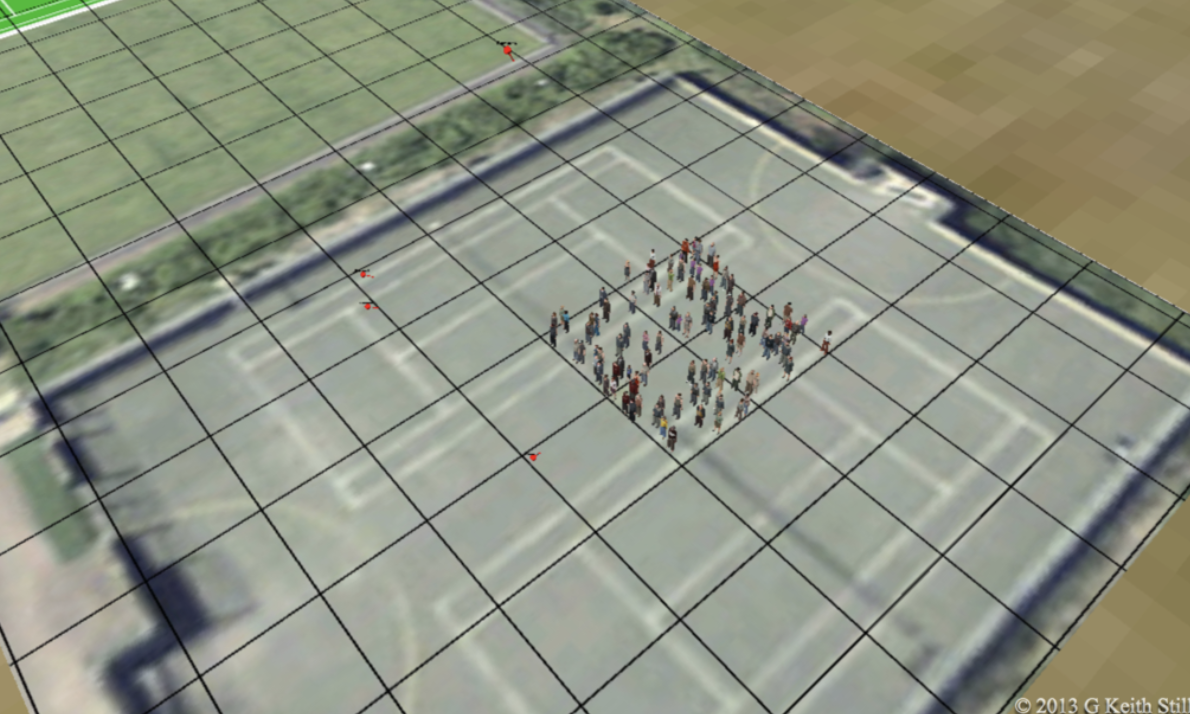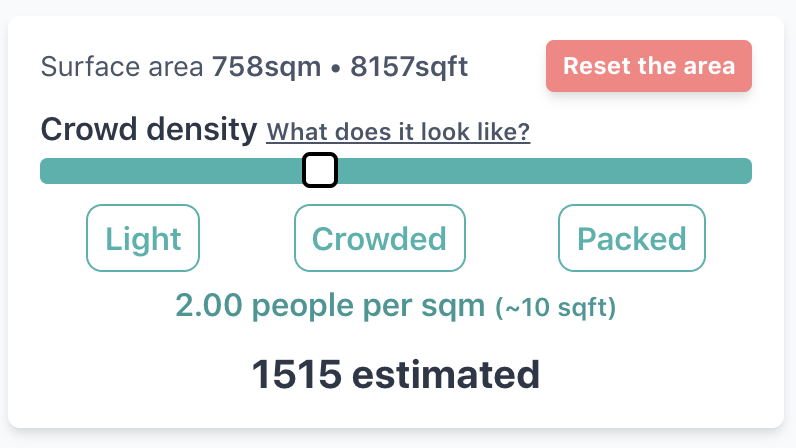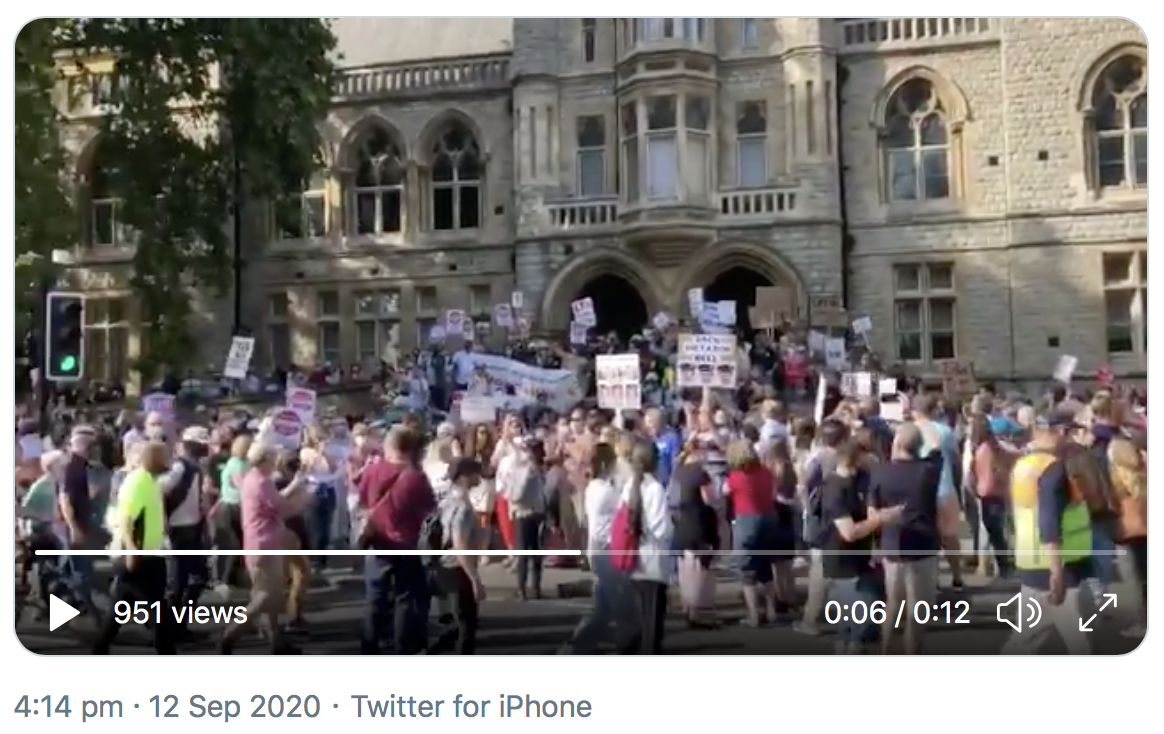Counting Crowds
November 2020
Notes on how to count a crowd.
++
Disagreements over crowd sizes at political rallies are pretty common. On one hand organizers want to highlight widespread support of their cause and so may be liable to exaggerate the number of attendees, and on the other hand opponents may want to downplay the size and be prone to underestimate.
More accurate counts certainly won't settle the disagreements but do at least bring evidence in to the conversation.
++
Anyway, there's two common methods to get closer to an accurate count.
The first originated from Herb Jacobs, an American journalist and professor in the 1960s, and it can be used to estimate a static crowd size by it's area & density.
For example, if your protest area is 10m2 and the crowd has a density of one person p/sqm then you have a total of ten protestors at the gathering, if the protest is the size of a standard tennis doubles court (260m2) at a crowd density of two p/m2 there might be up to five-hundred and twenty people in the area.
There's a helpful tool called Map Checking where you can play with areas and density over a Google Map of local landmarks.
If you can find a tennis court you can try the tool with the example I gave by tracing the outline:-

To try this with a protest march you'll need an image or short video to help you estimate the geographic footprint of the march and to take a view on the average number of people in each square meter. This is fairly easy if you have a overhead shot of the protest and harder the closer you get to ground level so try to find a few angles with different elevations.
Professor Keith Still provides some computer generated graphics to help as a visual reference, for example here's a illustration of a gathering at one person p/m2.

The other complexity of course comes from the non-standard shape of most protests and the different concentration of people each section so you might have to stitch together several estimates to get your number.
++
Here's a video from a protest in Ealing Broadway near where I live.
With Map Checking I can plot the approximate area in front of the townhall, stretching all the way down the road and occupying the width of the entire pavement.
The crowd is quite dense, certainly in the middle of the gathering, I would guess around two people p/sqm, but the density thins around the edges around where pedestrians are walking. Lets be generous and say the crowd size is approximately 750sqm at two people p/m2 throughout, which yields an total crowd estimate of ~1500 people.

++
The second way of estimate crowds is more useful when people are marching along a route. It's described by Ray Watson and Paul Yip in a paper called "How many were there when it mattered?".
The technique invovles finding a few videos of the crowd moving past a fixed points throughout the route and counting the number of people in the footage over a fixed time span. You can then estimate the total procession size by multiplying this number by the total duration of the march. For example, if two hundred people pass by a fixed point over a minute and the length of the march was 10 minutes you can approximate there were about two thoundsand people in attendance.
Mobile protests have more variables than static ones - people will be accidentally double counted, people will have not been caught on the footage, people will have joined and left along the route, we might count static passersby or businesses on the route who cheered as protestors passed. There's always going to be a margin of error here so sampling the march size at different points helps counter these problems.
I found a video of the local protest I mentioned above taken from middle of the protest that shows the full march passing through, from the people holding the large banner at the front to the Routemaster bus at the back. The whole video is 13 minutes long and the march about 11 minutes of that.
If I pick a random 60 second period from a reasonably dense section in the middle (let's say the 5th minute) and count the people walking past by hand I can see about 117, then if we multiply this by 11 (the duration of the march) we get to a total estimate of 1,287.
As this is a small march I counted the number of people at each 60 second interval throughout to demonstrate how the estimates might vary depending on which segment I picked and to furthermore highlight that take multiple samples is important.
For example, at its most dense point around minute 6 there are 57 more people than the lightest point, minute 8.
| Minute | Number of marchers | Total march size estimate |
|---|---|---|
| 1 | 106 | 1,166 |
| 2 | 114 | 1,254 |
| 3 | 96 | 1,056 |
| 4 | 97 | 1,067 |
| 5 | 117 | 1,287 |
| 6 | 141 | 1,551 |
| 7 | 115 | 1,265 |
| 8 | 84 | 924 |
| 9 | 140 | 1,540 |
| 10 | 93 | 1,023 |
| 11 | 121 | 1,331 |
As it turns out the fifth minutes is a pretty accurate estimate of the average sample - 1,287 compared to the the average of all minutes 1,224.
It's also reassuringly close to the static crowd size estimate in Ealing Broadway I calculated earlier, within a 15% margin of error.
++
But hang on, don't the Met Police provide numbers?
Apparently not anymore according to a Freedom of Information request from 2019,
“The MPS no longer publishes estimated crowd numbers unless in very exceptional circumstances. Protest numbers are extremely hard to accurately judge and figures can vary significantly and are very subjective. The MPS does not have the expertise to accurately make these estimations and consequently do not disclose numbers in relation to any event. Where records of estimated numbers are made these will be held as police intelligence and not disclosable under the FOIA scheme.” - Met Police FOI
++
As I said, crowds are often over-exaggerated or under-exaggerated depending on the motives of the estimator so perhaps in this case we might settle for a "true" figure somewhere in the range of 1,250 to 1,500.
In the case of the real-life protest I've used in the examples above some of the local Conservative councillors have quote figure of "3,000 marchers" to underline the local opposition to a traffic scheme that has recently been installed, an estimate that presumably came from the march organisers but one that seems inflated by ~100%.
Likewise some of the opposition supporters put the figure at 500, a underestimate by a few hundred people.
According to the two methods I've used there's clearly not this many or indeed this few people walking along the procession or at the static gathering.
++
More accurate counts certainly won't settle the disagreements or diminish the passion felt on either side of the debate, but mistruths, whether knowing or not, spread quickly and errode the quality of the conversation and cast doubt on other so-called facts and statements put out to support a position.
--
Disclaimer: I am merely an amateur crowd-counter! :)
